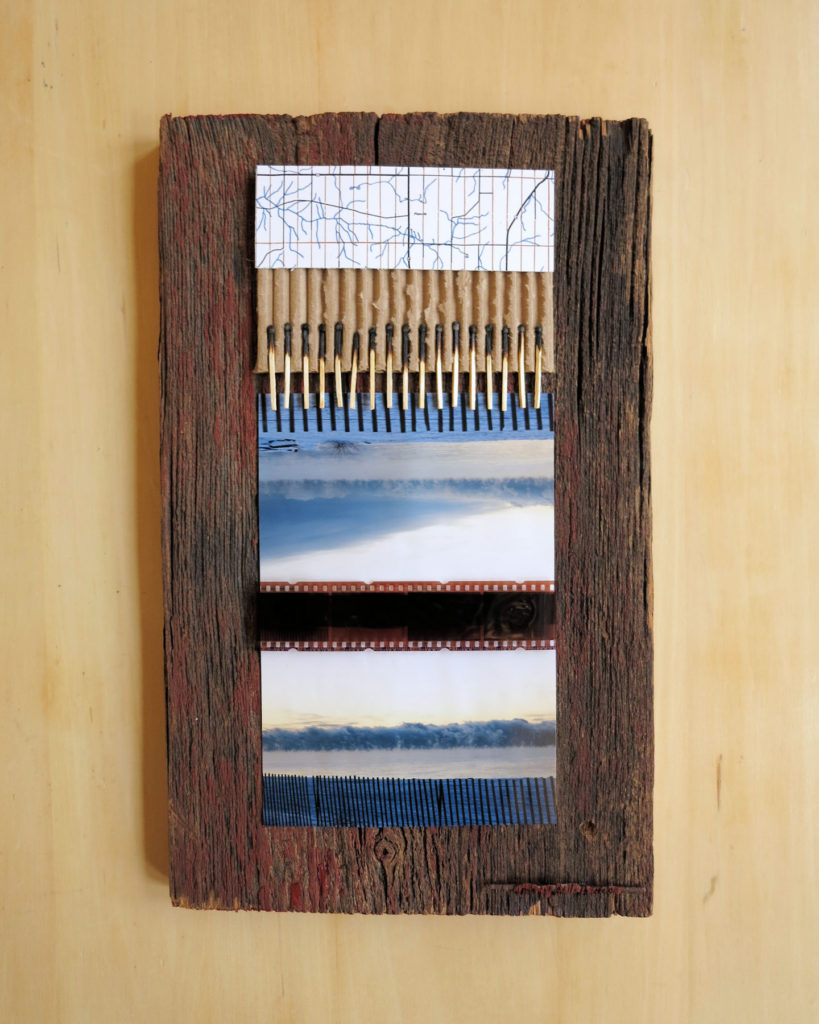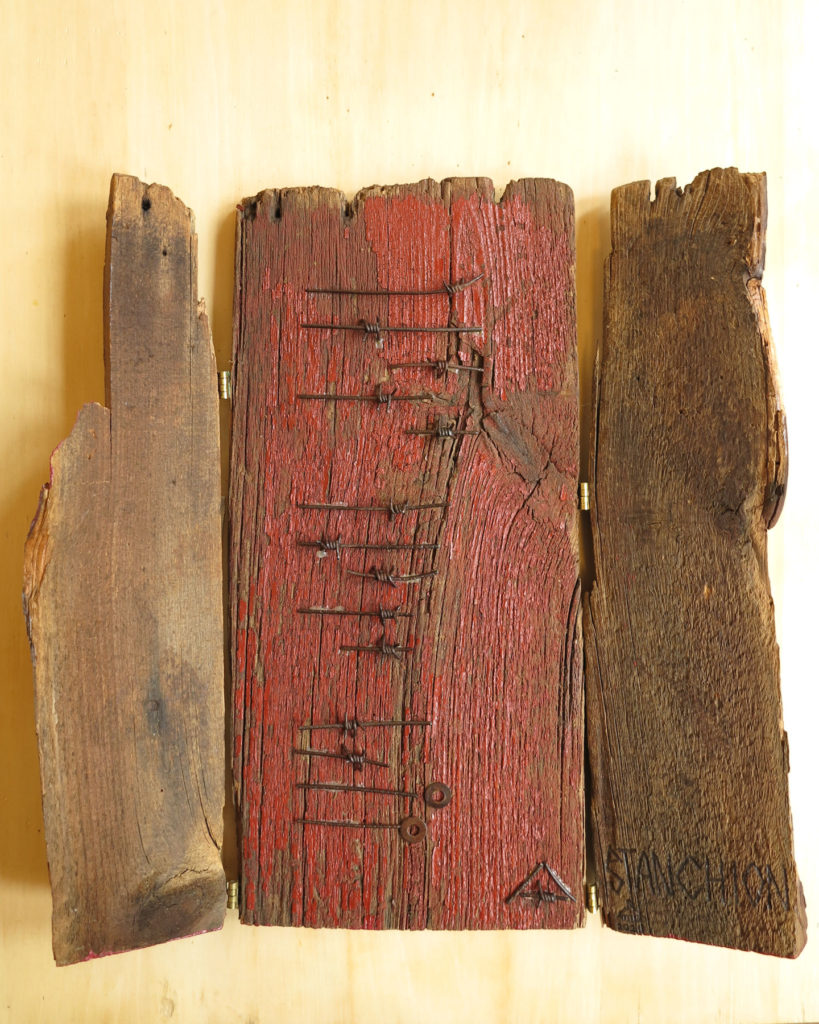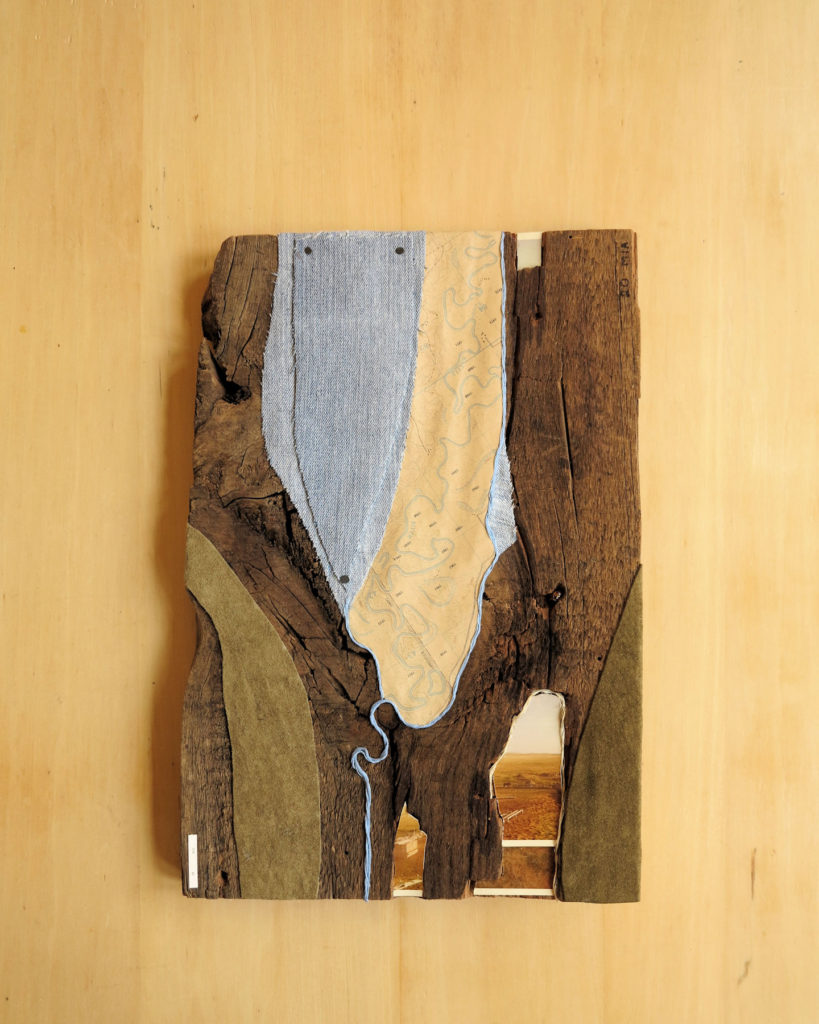A year ago I reread Phoebe Wang’s poem Invasive Carp and was inexplicably taken with a word she used – stanchion. From the word and it’s etymology and associations grew eight pages of musings and stabs at scraps of verse. I’d also had in mind for many years a favourite old photograph of snow fencing along Woodbine Beach, and its negative strip, curiously a similar shade of cinnabar as the fence itself. (I now cannot say which of the word-image pair informed the other.) I worked on the writing December 2019, February 2020, this summer, this fall. In between, I retrieved old barnboard, that weathered red again, and made a haptic poem with pieces of barbed wire. Over time, the barnboard offcuts called to me – I made my long imagined collage of fencing, and it’s opposite, a fenceless study of the prairie, the big sky of Majestic Ranch. Bob Dylan’s line from Mr. Tambourine Man became the focus of the combined multi-media work, and Mr. Tambourine Man himself, my long-time partner, John, the dedicatee. And now, as the leaves depart, the fences again become visible, but meager, man-made and easily overcome. Can you say the same for your own fences?
Stanchion!
for John
and but for the sky there are no fences facing
Bob Dylan
more than a fence to slow the blowing snow
stanchionesque stockades put on a show
of guarding the shifting sands of status quo
impaling the hearts of the fenced
with ignorance made manifest
but for trees there’d be no fences facing
the tree alive teaches you to love the sky
it feeds its own leaves freedom to depart
laden with fruit its bending branch
bows down, earth-grateful, full of grace
but for lifeless fences facing in your mind
you are free to stand (buttress or blockade?)
free to bend and resonate, be lute, sitar,
marimba, flute - your song the limitless
sky - the freedom, unconstrained, to fly


